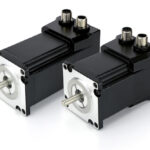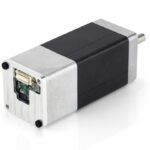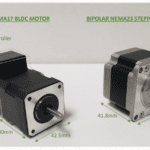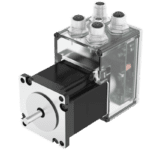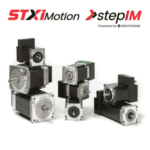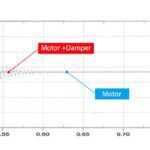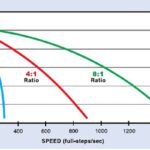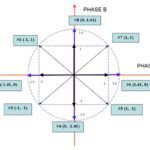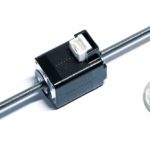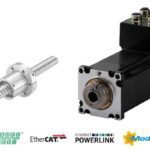Nanotec has expanded its product portfolio with the ASA5618 high-torque stepper motor. It meets the highest safety standards, as evidenced by its UL/CSA certification, but also supports even the most demanding applications with particularly precise and reliable performance. With a flange size of 56 mm (NEMA23), the ASA56 features a holding torque ranging from 140 […]
Stepper Motors
Smart, integrated motor with 28-mm flange from Nanotec
Nanotec presents the PD1-C, a stepper motor that features an integrated controller and encoder. With a flange size of merely 28 mm (NEMA 11), this compact smart servo reaches a maximum holding torque of 18 Ncm and a peak current of 3 A. Three motor versions are available: one with protection class IP20, a version […]
Comparing stepper and brushless dc motors
A comparative study of stepper vs. brushless dc motors reveals the pros and cons of both motor types. Charan Bhamra Mechatronics Engineer EZmotion For engineers and designers working on modern-day motion and other industrial applications, it’s vital to understand the advantages and disadvantages of stepper and brushless dc (BLDC) motors. Here we’ll look at a […]
Stepper motors feature on-board drive and control
Delta Line has expanded its offering of motors with integrated electronics to include stepper motors. These smart stepper motors eliminate the need for a separate drive and controller, providing a complete stepper motor solution in a single, easy-to-integrate device. Delta Line’s ISI57 and ISI60 stepper motors with integrated electronics provide significant space savings, not only […]
STXI Motion expands integrated closed-loop servo-stepper motor line
The stepIM NEMA 17 EtherCAT model from STXI Motion is the newest addition to the company’s family of integrated closed-loop servo stepper motors. The IP65-rated stepIM NEMA 17 delivers an efficient and economical solution for applications requiring the performance of a servo at the price of a stepper. “The new stepIM NEMA 17 closed-loop stepper […]
Why do stepper motors vibrate and what are ways to avoid or dampen vibrations?
With each discrete step that a stepper motor makes, the inertia of the system causes the motor to slightly overshoot (or undershoot) the intended step angle. The motor then oscillates, or “rings,” until it finally settles at the commanded position. If the frequency of these step-by-step oscillations is at or near the motor’s natural frequency, […]
When is the application of overvoltage safe (and common) for stepper motors?
For most types of motors, operating with a supply voltage that is higher than the rated voltage — referred to as overvoltage — can cause an increase in current, and heat, high enough to damage the coils and other motor components. But in some cases, a stepper motor can be operated at a voltage higher than rated […]
Why is RMS current important in stepper motor applications?
Most precision stepper motor applications — especially those in automation and motion control — use a control method referred to as microstepping, which creates a sinusoidal (or nearly sinusoidal) current waveform, rather than the square wave of current produced with typical full-step control. The current rating of a stepper motor depends on the amount of […]
Integrated connector option for AMETEK hybrid actuators
Haydon Kerk Pittman, a business unit of AMETEK’s Advanced Motion Solutions Division, announces that its size 8 21-mm hybrid stepper motor is now available with an integrated connector. Offered alone or with a harness assembly, the connector is RoHS-compliant and features a positive latch to allow high connection integrity. The connector is rated up to […]
JVL expands line of integrated spindle drive motors with absolute multi-turn encoders
JVL A/S has introduced a new addition to its ServoStep line of motors, a directly mountable motor for driving spindles. It’s perfect for replacing hand wheels in format change applications. ServoStep has everything built-in including motor, encoder, drive electronics, control electronics with ePLC and optional Ethernet or CAN bus integrated into one compact unit. All […]

